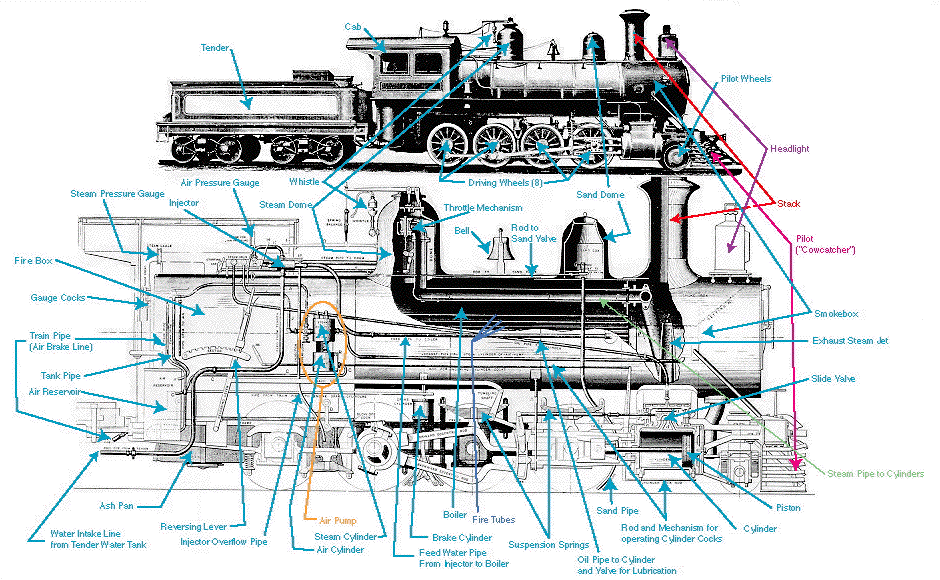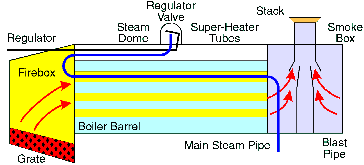
The main principle of the steam engine has remained the same ever since it was invented:
Here is a simple diagram of the steam locomotive:

In the very early days a boiler was simply a container with a fire under it. This is very inefficient way of transferring heat from the fire to the water.
The most common boiler design is the Tube Boiler, as seen in the diagram below:

Here the hot flue gasses from the grate are drawn through a series of boiler tubes. These tubes provide a vastly increased area for the heat to be transferred to the water.
To make the fire draw effectively the exhaust steam from the cylinders passes through a blast pipe below the stack, this arrangement is designed to produce a reduction in pressure caused by the Bernoulli effect. This reduced pressure in the smoke box then draws the flue gasses through the boiler tubes. The harder the locomotive is working the more gas is drawn from the firebox thus generating more steam.
The steam produced is collected in a steam dome on the top of the boiler where the regulator valve controls the quantity of steam delivered to the cylinders. To further improve the performance the steam is the super-heated by passing it through the top of the firebox and through the center of the boiler tubes.
The high pressure superheated steam is them passed to the cylinders. Here the energy stored in the steam is converted into mechanical energy to drive the locomotive along.
Most locomotives used Double Acting Cylinders. This is a way of getting twice the power with the same number of cylinders. This is done by introducing the steam alternately on either side of the piston so the piston rod is both pushed and pulled generating power on both strokes.
The cylinder valves control the access of the steam to the cylinders. The operation can be simply described as follows by considering only one side of the double action: -
The linear backwards and forwards motion of the pistons is converted into rotary motion by the connecting rods and cranks.
To keep the piston aligned in the cylinder there is a crosshead that runs on a guide. This crosshead carries the small end of the connecting rod. The other end, known as the big end transmits the power to the wheels via the Crank Pin.
Most locomotive have more than one set of driving wheels. There share the power generated by the cylinders, which are by the side rods.
The cranks on either side of the locomotive are offset by 90 degrees. This spreads the power from two double action cylinders evenly over a complete revolution of the wheels.
The valve gear controls the opening and closing of the valves in the cylinders, and also provide the means of reversing the direction of the wheels. There are two main valve gear systems in use on locomotives. The Walcharts Valve Gearfor use on outside cylinders, and the Stephensons Linkgear for use between frames.
Both of these systems basically operate from a second crank or eccentric system that provides a movement of 90 degrees on the main piston rod.